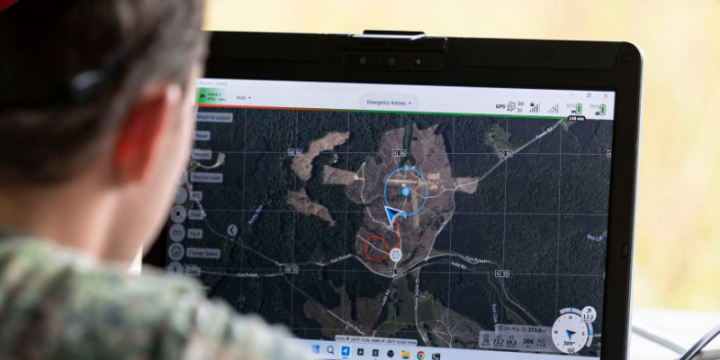TNO will begin developing a laser communication terminal with a consortium of Dutch partners. This high-efficiency miniature demonstrator called HemiCAT will increase data transmission capabilities of small satellites via direct to earth laser communication. The project will start in 2023, with a demonstration in orbit around the earth in 2026. This project is made possible in part by the PPS grant from Holland High Tech.
The HemiCAT-project
Laser communication makes it possible to send the large amounts of data generated on satellites directly to Earth without the limitations of standard radio frequency communication technology. This is achieved by transmitting the data in the infrared wavelength range, where greater bandwidth is possible. With radio frequencies several megabits per second can be achieved, but with laser communication, the transmission speeds of these small satellites can be ten to a hundred times higher. In addition, laser communication links are considered much more secure than radio frequency communication links and the systems can be smaller, lighter and more powerful, which is important in aerospace.
The HemiCAT project is made possible by an industrial participation agreement between RMD and the Military Production Commission of the Ministry of Economic Affairs and Climate (EZK).
Next step in optical satellite communication
The HemiCAT terminal builds on the laser communication terminal CubeCAT, which will be launched in early 2023. Based on further development of the CubeCAT terminal, HemiCAT will demonstrate the vital technology for sending the communication laser to the ground station using mirrors. This allows HemiCAT to communicate without having to reorient the satellite as it tracks the receiving ground station. When the satellite is in orbit, HemiCAT will first communicate with the optical ground station at TNO in The Hague. In addition, HemiCAT will also be more interoperable with the emerging LEO constellations as an alternative to downlinking data when the optical ground stations are not available.
Industrial Participation and Public Private Partnerships combined to create a “win-win-win”
The strengthening of the relationship between TNO and Raytheon through the HemiCAT project is made possible by combining Industrial Participation funds, made available by the Dutch MEA and RMD, and a PPS grant for public-private partnerships by Holland High Tech. All stakeholders benefit, leading to a “win-win-win” situation. The project further develops a key capability within the NATO alliance, strengthens and positions the Dutch defence industry in international supply chains, and allows international partners to benefit from innovative Dutch solutions.
Unique competences
TNO has been developing and building optical instrumentation for space and space travel for fifty years, in particular astronomy and earth observation, explains Kees Buijsrogge, director of TNO Space & Scientific Instrumentation. “We have gained a lot of experience in system design, accurate metrology and compensation for the disturbances that occur when you look through the atmosphere. Those competencies, altogether perhaps unique in the world, fit perfectly with laser satellite communication.”
TNO involved Dutch companies at an early stage, including Demcon and VDL ETG. “We build single units or at most a few systems, while for laser satellite communication there is a demand for hundreds or even thousands of units. That is the business for companies.” Priem: “TNO is good at developing concepts. We will develop this according to what the market wants, in terms of functionality, costs and reliability, including redesign for manufacturability and of course production.” This is happening, for example, in the Laser Satcom project, part of the National Growth Fund program NXTGEN HIGHTECH; Van den Eijkel and Priem have written a proposal for this.





